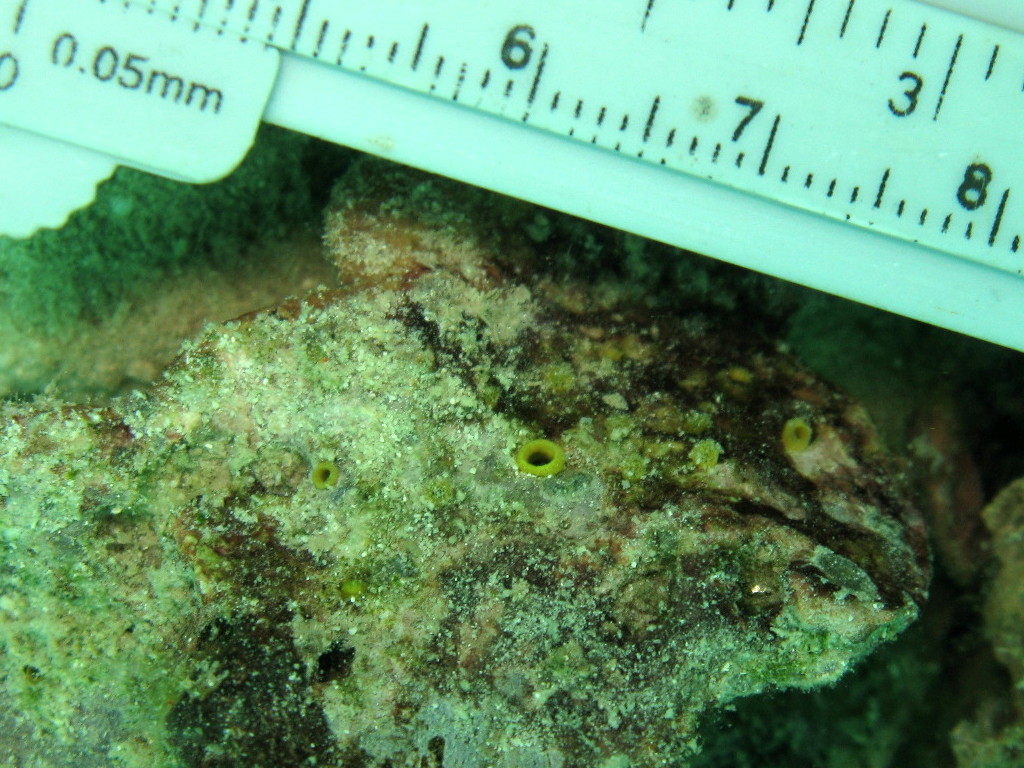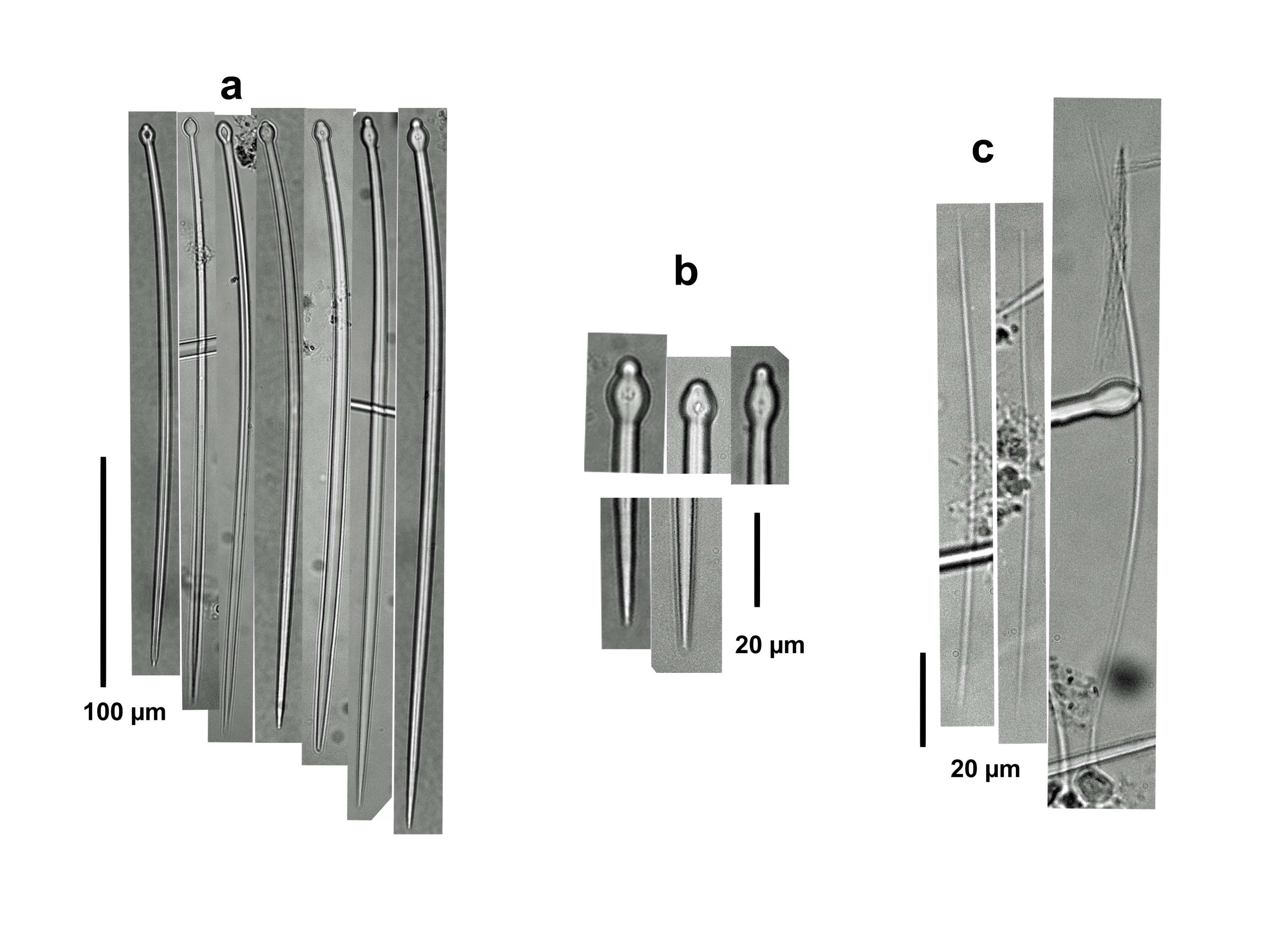Observed Characteristics:
Color:
- yellow
Morphology:
- papillated
Consistency:
- soft
Sample Locations:
- Colombia
- Panama
Cliona amplicavata


Description: Excavating, papillated sponge of low, thickly walled oscular papillae, separated from also low-lying inhalant ostial papillae, both up to 2 mm in diameter. Color of papillae yellow to orange yellow. Consistency soft. Megasclere spicules are robust tylostyles, 210-410 µm long by 4.5-18.8 µm wide, with rounded heads, often subterminal, 5-18 µm in width and 6.3-17.5 µm in length; ends acute. Microscleres are raphides, 97-375 µm long; no spirasters. The specimen from Santa Marta, Colombia, had the raphides, but the specimens from Bocas del Toro, Panama, and from Long Island, Bahamas lacked them. Tylostyles are more slender and thinner at Santa Marta (230-300 µm long and 4.5-7.3 µm wide), than at Bocas del Toro (210-410 µm long and 10-18.8 µm wide), following the generalized pattern of hypersilicification towards the Southern Caribbean.
Notes: The small size and the yellow color of the papillae, as well as the tylostyle shape and the presence of raphide microscleres fit the characteristics described for C. amplicavata from Bermuda (Rützler, 1974). However, we failed to find raphides in our material from the Bahamas and Colombia, although the other characteristics match the description. We decided to pool together these into C. amplicavata while further sampling yields more information about the variability of the species in the presence of microscleres. Other Caribbean excavating sponges with separated yellow papillae are C. janitrix sensu Pang, 1973, C. flavifodina Rützler, 1974, C. macgeachii Holmes, 2000, Siphonodityon brevitubulatum Pang, 1973, Alectona jamaicensis Pang, 1973, and Suberea flavolivescens (Hofman & Kielman, 1992), the latter three not yet pictured here. Apart from subtle differences in external shape, it is necessary to examine the spicules to distinguish them. Among those yellow Cliona mentioned above, species without spiraster microscleres are C. janitrix, and C. macgeachii. The former is distinguished from C. amplicavata by its tylostyles with abrupt stair-stepped ends and stylote and strongyloxeote modifcations, and the latter by its much smaller tylostyles (112-193 µm long by 3.6-10.4 µm wide).
Author Reference: Rützler, 1974
Link: World Porifera Database


